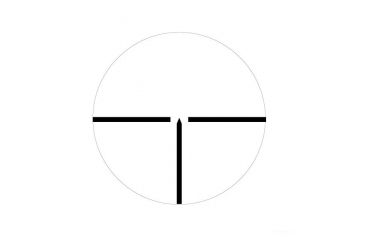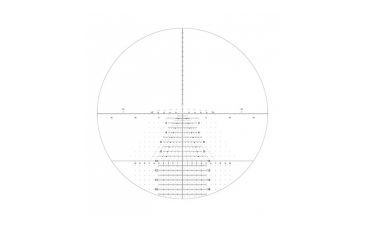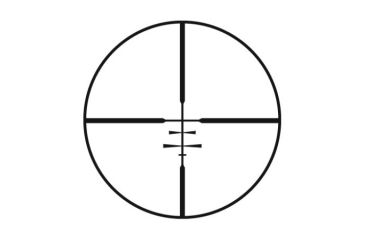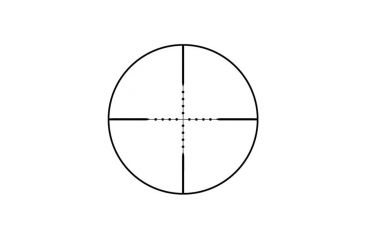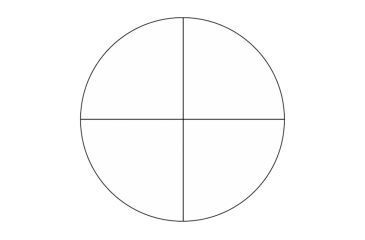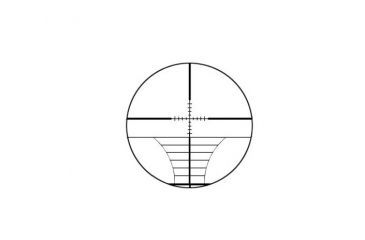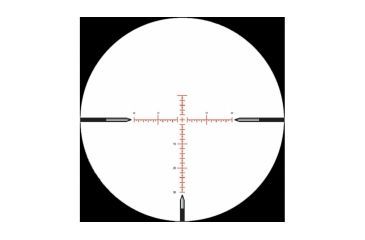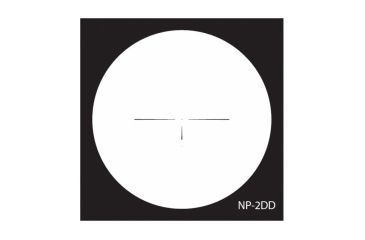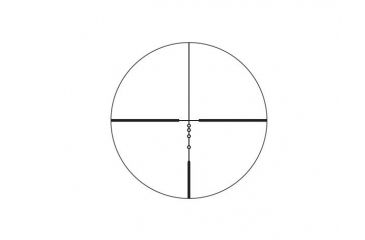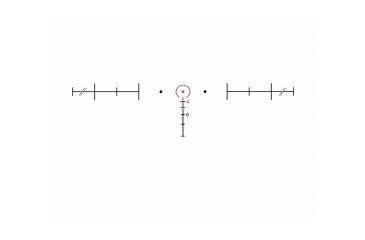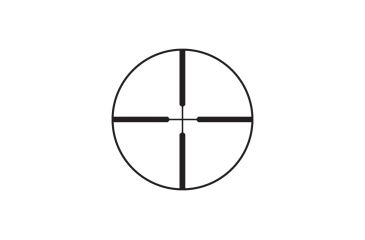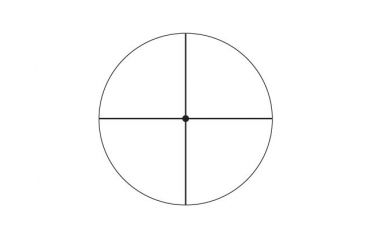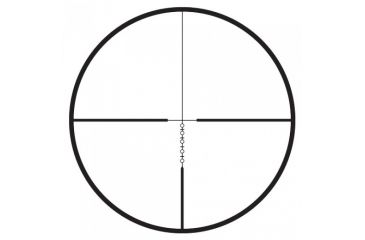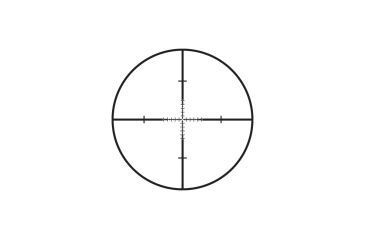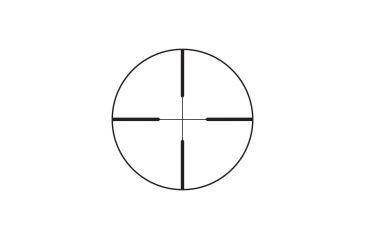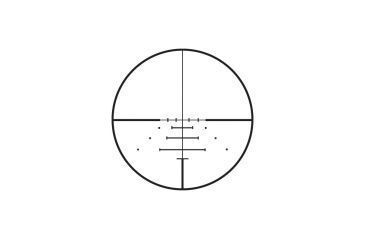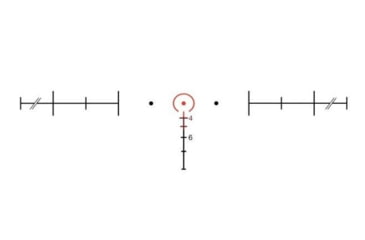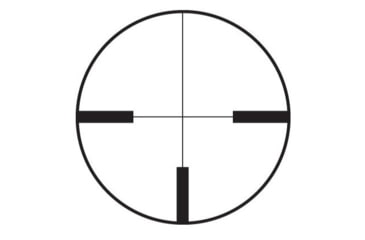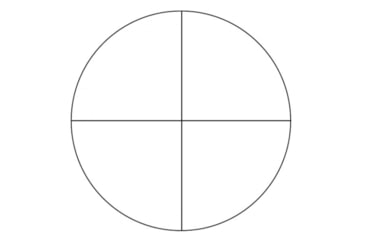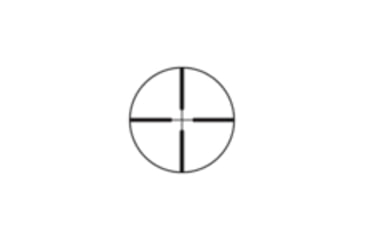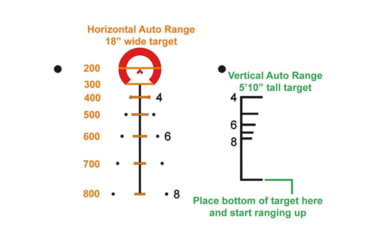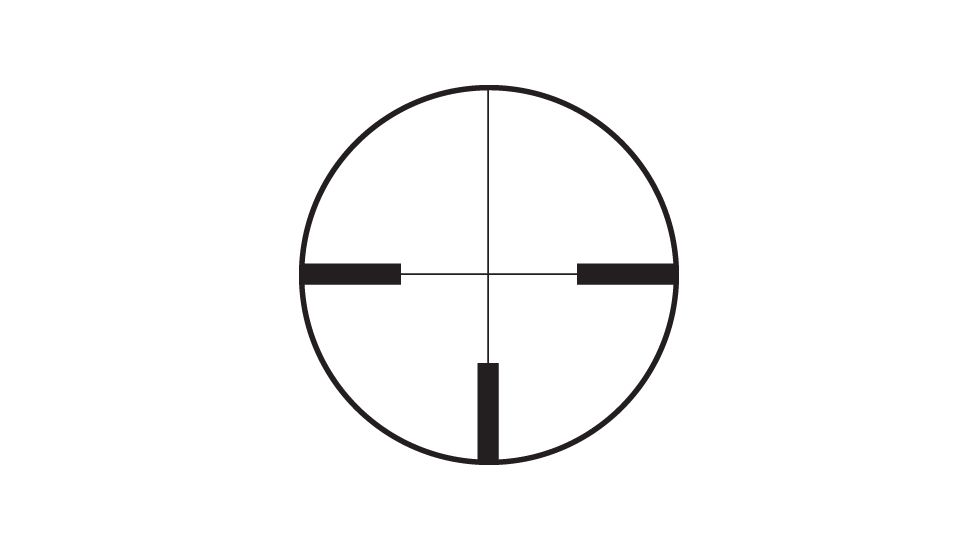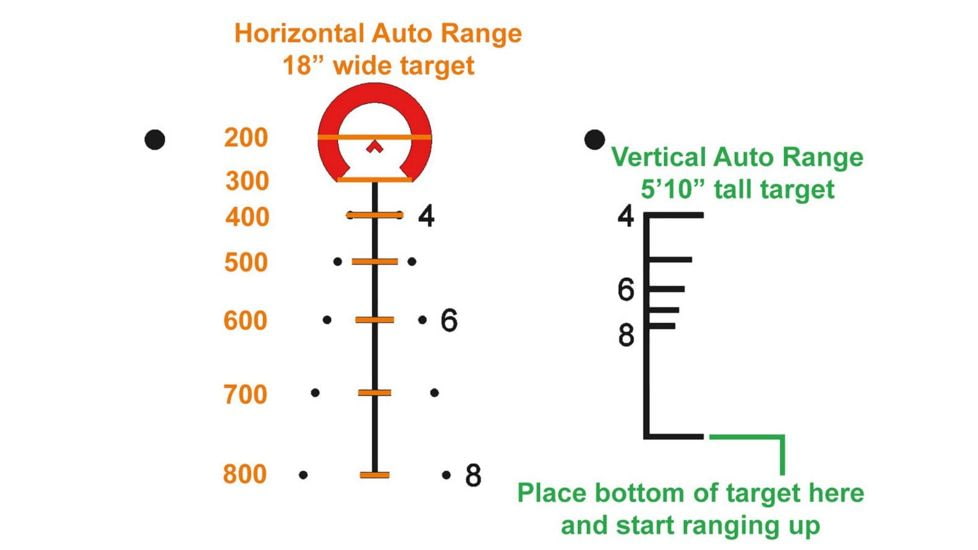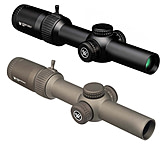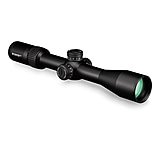Reticle Types With Visual Guide: Table of Contents
Center Dot Reticle | Circle Reticle
BDC Ballistic Drop Compensating Reticles
Mil Dot | Mil Hash | TMR Tactical Milling Reticle
Simple Reticles
For an introduction to reticles, please visit What You Need To Know About Rifle Scope Reticles. This article will cover more advanced reticle options, which have been popping up in the market more and more recently.
Telescopic riflescopes have been around for over a century but became more of a mainstay on rifles during World War II. These scopes were basic, with a wire-based reticle system. From this design, the "crosshair" was devised. Simply put, it was two thin wires crossing in the middle to form an accurate point of aim. The crosshair is the simplest reticle to use since you're just putting the middle of the reticle on your target. Over the decades, the crosshair was updated in a few different ways to help the shooter.
Fine Crosshair Reticle
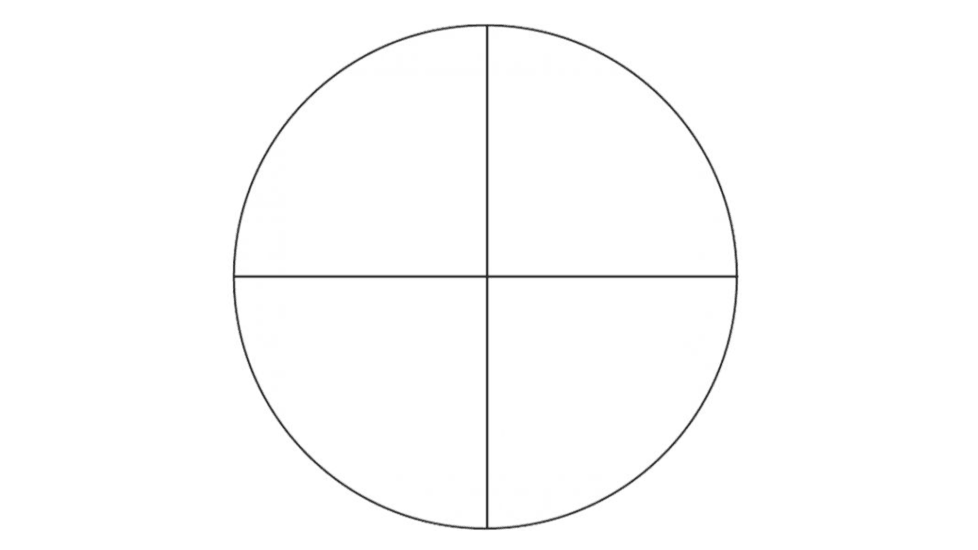
This is the standard "crosshair" reticle, where both the windage and elevation lines are the same width throughout the sight picture. These are best for ease of use and pinpoint accuracy but can easily be lost in brush due to the thinness of the wires. As a result, this reticle is not the best for hunting in tall brush. Crosshairs are the most popular reticle and are best for target and competition shooters due to their ability to provide a very precise point of aim.
Center Dot Reticle | Circle Reticle
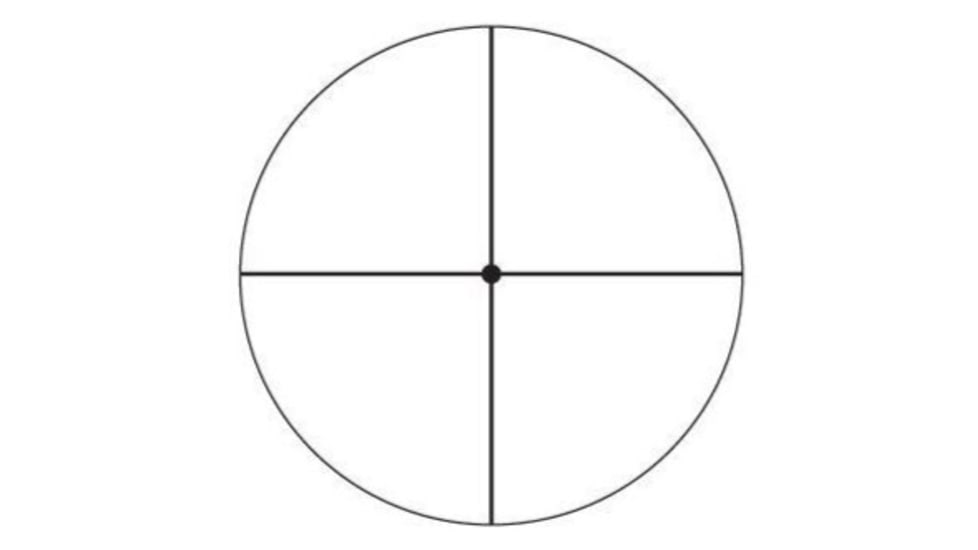
This is a standard crosshair-style reticle with a dot in the center or a circle around the center of the crosshair. The dot and circle are intended to draw the eye to the center of the reticle for quicker target acquisition and precision. Dot reticles are best used for competition shooting, as well as hunting quick-moving game, such as varmint or hogs. Circle plex reticles are usually recommended for turkey hunting.
Duplex Reticle | V-Plex
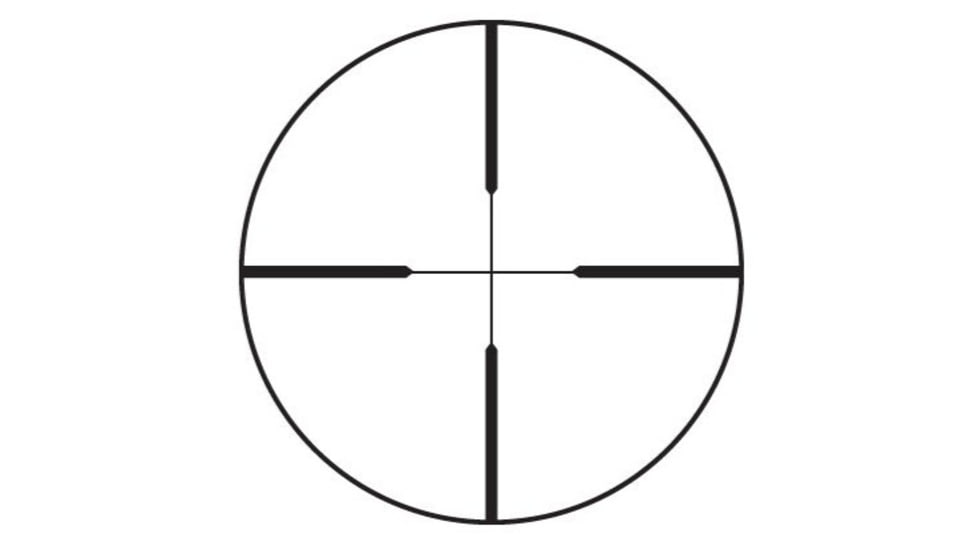
Duplex reticles are just a standard crosshair, but with very strong outer posts. These posts are much thicker than the crosshair itself, which draws the shooter's eye to the center. They are also great for hunting in brush since the bold outer posts ensure that the thin crosshair is much more noticeable to the user's eye. These are great for hunting anything, including big game. A very popular MOA model is the V-Plex from Vortex.
Heavy Duplex Reticle
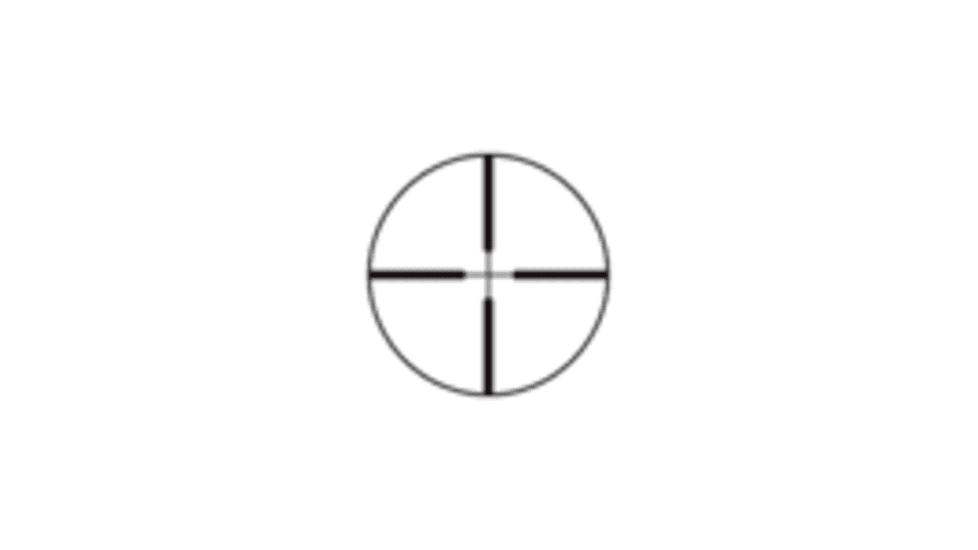
This is simply a much bolder duplex reticle. The outside posts tend to be much wider than the standard duplex, and the actual crosshair portion is also thicker. This type of reticle is best used for low light hunting or hunting in very "brushy" areas where a regular duplex reticle might get lost in the background.
German Reticles
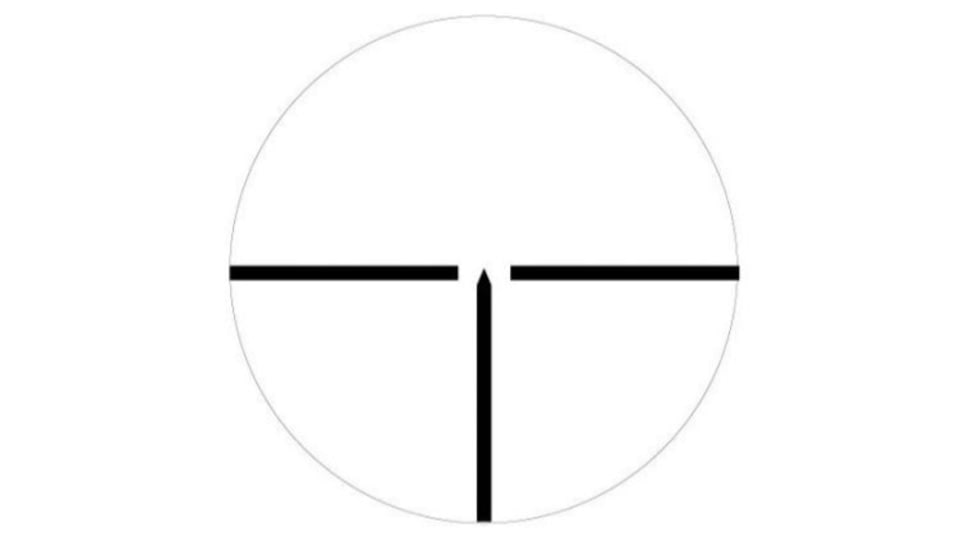
The Germans had a slightly different approach to the reticle. The German #1 reticle has a single post that comes to a sharp point and comes up vertically from the bottom of the sight picture to the center. There are also bold, squared posts that come in from the right and left of the sight picture. The side posts do not connect to the center post like a wired reticle but are intended to draw the user's eye to the center. Though the #1 is good for target shooting, and even great for a sniper, they do not work well for hunting, as they are fairly easy to lose sight of in a brushy background.

The German #4 reticle is nearly identical to a duplex reticle. The only real difference is that the German #4 does not have an emboldened top post. The crosshair is the same width from the center to the top of the sight picture. Since it's similar to the duplex, it is recommended for the same uses and is very simple to use.
BDC (Ballistic Drop Compensating) Reticles
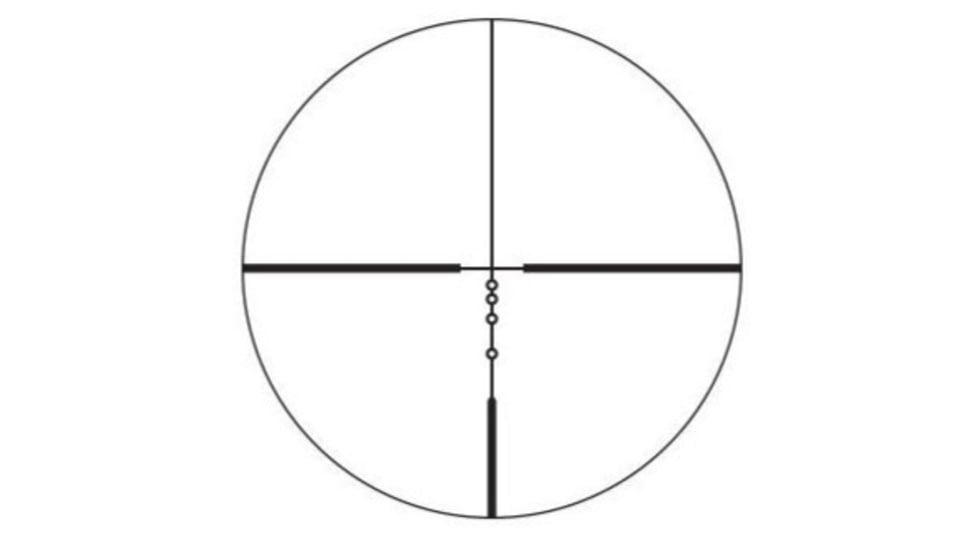
BDC (ballistic drop compensating) reticles have been around for some time. You can read more about them in our original What You Need To Know About Rifle Scope Reticles guide. There are now many manufacturers including this type of reticle in their scopes, and a lot are tailoring these to specific calibers. The most popular are obviously for AR platforms, which are most commonly available in the 5.56mm NATO/.233 Remington. These types of reticles are great for longer range, quick shooting. As older systems would require the user to adjust their elevation turrets for longer shots, BDC reticles allow the shooter to use the "holdover" point for longer-range shots. Many will allow this out to almost 1,000 yards.
BDC reticles are great for hunting, and some can be used for target and competition shooting.
Caliber-Specific
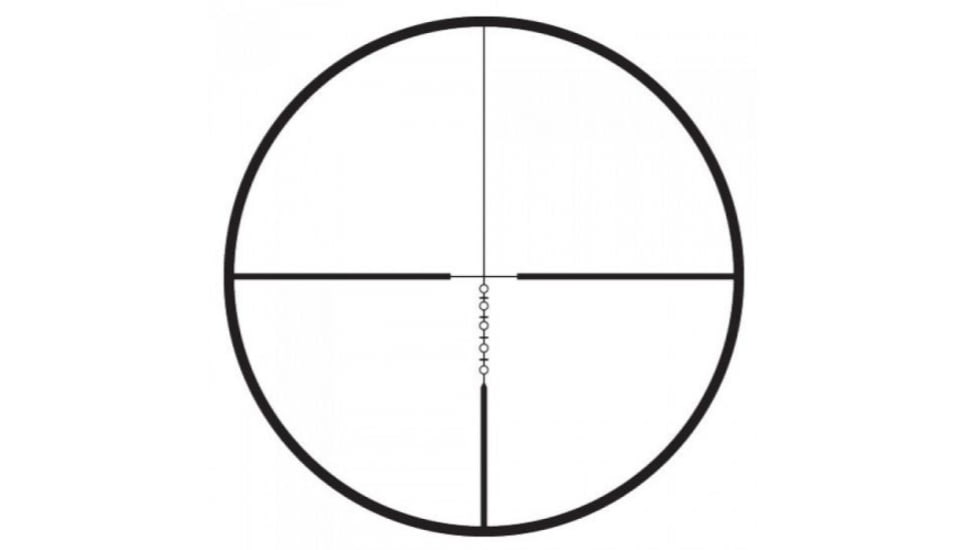
With the proliferation of higher and higher-tech scopes, there is now a wide variety of caliber-specific BDC reticles. They're usually tailored to a .223 55-grain cartridge or .308 65-grain cartridge. Some are designed for larger projectiles, such as slug guns and black powder firearms. However, all of these reticles can be tailored specifically to the cartridge and load if you visit the manufacturer's website.
Since the most popular rifle these days is the AR platform, many other scope makers are providing their users with .223-specific BDC reticles. There are plenty of options from the most popular manufacturers for this cartridge. Most of them are specific to the .223, though the systems can be adjusted to any velocity ballistic.
Other manufacturers have also jumped on the software side of things, such as Vortex and Burris. These programs work the same way as the other programs, allowing the shooter to use the holdover points for any cartridge they want. The scopes with these types of reticles will include instructions, and you can always go straight to the manufacturers' websites for more information.
CQB Reticles
Close Quarter Battle (CQB) reticles are found in low-powered tactical scopes. This type of reticle is intended to be used within 100 yards but will add additional ballistic drop compensating for longer shots. Trijicon ACOG reticles will have this type of reticle, as will most 1-4x powered scopes designed for use on an AR platform. Many of them will have a crosshair dead center, and some will even have some sort of circle or semicircle around it to draw the shooter's eye to the center. CQB reticles are aptly named, as they are intended to be used at 1x magnification, and normally only magnify 4x for shots within 100-300 yards.
Hunting BDC
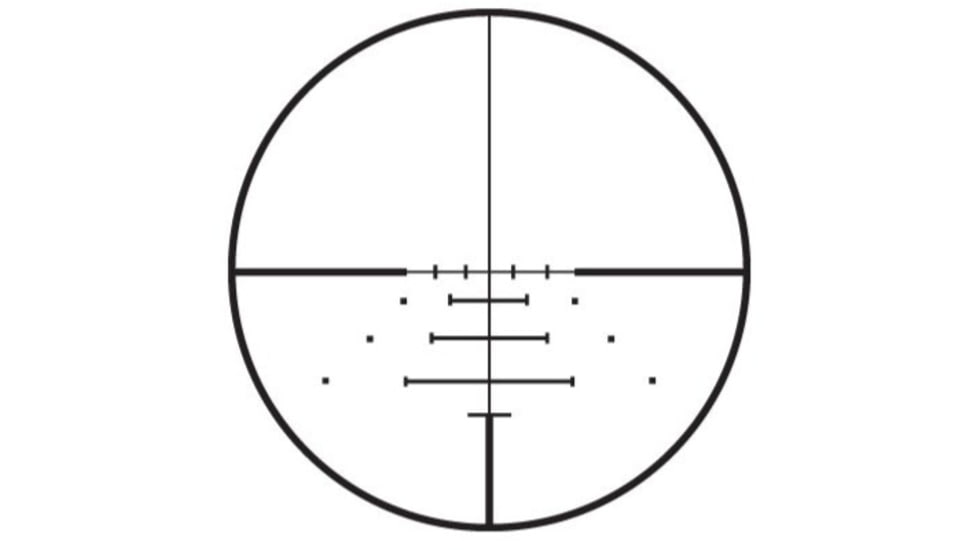
Last, but certainly not least, are ballistic drop compensating reticles that are designed for hunting. Varmint reticles will start with a standard crosshair, with bullet drop markings in the lower portion. However, this style adds horizontal lines to these reticles, which get wider towards the bottom. These markings are used to calculate the bullet drop, as well as the effects of the wind. Leupold's Boone and Crockett reticle is very similar to a varmint style but is calculated for more powerful, heavier loads used for big game hunting. This system is great for shooting over flat, open areas, where the wind will affect the trajectory of the projectile.
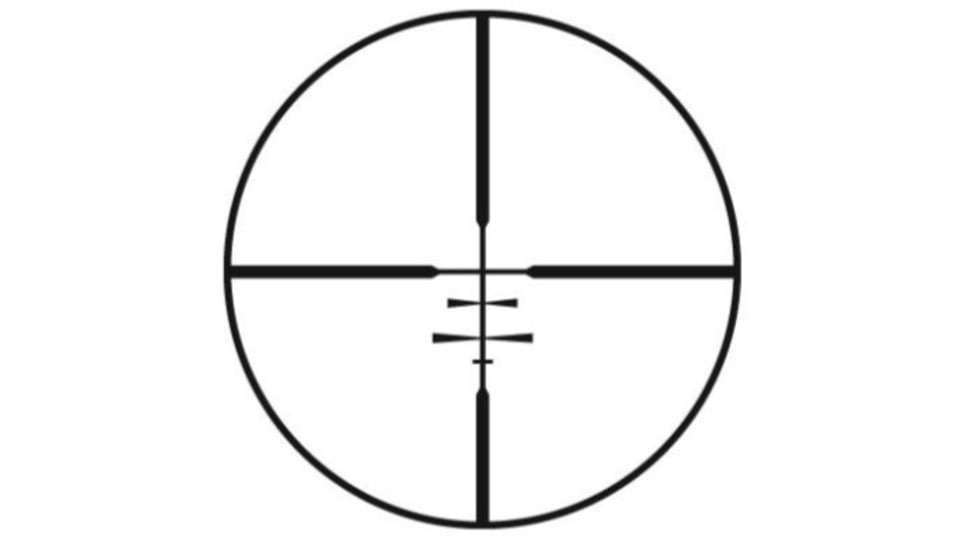
Rangefinding Reticles
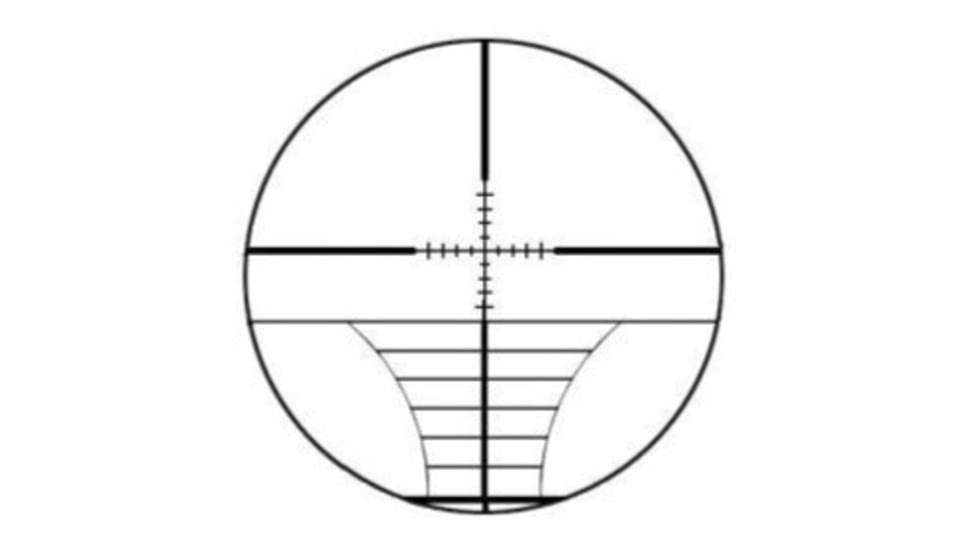
Rangefinding reticles are designed to assist the user with figuring the distance from the shooter to the target. Many of these reticles will have a scale in the lower portion of the sight picture. Some of them will have horizontal lines on the bottom portion of the crosshair that are different widths, such as the Trijicon ACOG reticles. These rangefinders are intended to be used on human targets, and the horizontal lines can be placed on a human silhouette at the shoulders to estimate the distance to the target. Rangefinding reticles can be rather busy compared to simple reticles, but they are imperative for the shooter who is out hunting solo without a spotter to range distances for them.
Mil Dot | Mil Hash | TMR (Tactical Milling) Reticle
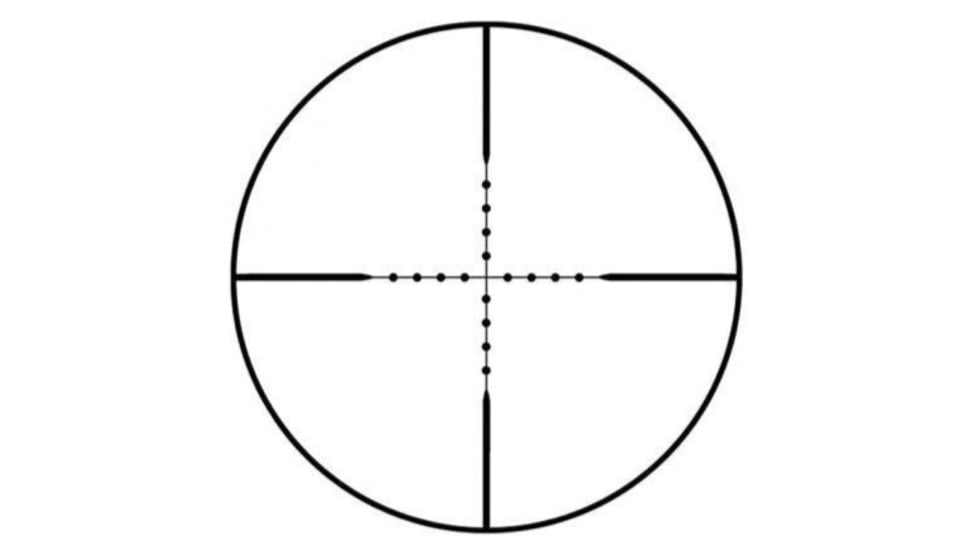
Mil means milliradian, not military. A milliradian is 1/1000 of a radian. A radian is an angular measurement that is equal to the angle formed at the center of a circle by two radii cutting off an arc whose length is equal to the radius. A mil in a reticle subtends 3.6" at 100 yards. Double that number for 200 yards, triple for 300 yards, and so on. A mil is 36" at 1,000 yards.
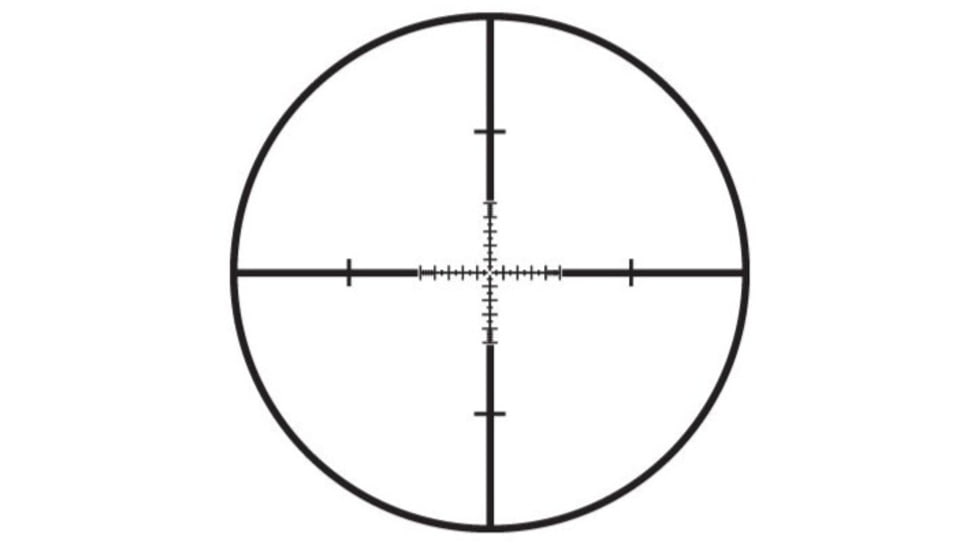
There are plenty of Mil-style reticles out there, with the most popular being the Mil-Dot and Mil-Hash. The Mil-Dot will have dots spaced out along the horizontal and vertical crosshairs, and the Mil-Hash are simply lines instead of dots. The hash marks are a bit more accurate, as you'll have tiny crosshairs along the crosshairs. These reticles were used in sniper teams, though the point of the reticle is for the shooter to be able to range their target for an accurate shot.
Our previous guide will teach you how to properly range with a MilDot reticle. It's a tricky feat, so make sure to freshen up on your math!
ACSS Reticles
ACCS is short for Advanced Combined Sighting System. They are designed for quick target acquisition but combine the advantage of a BDC and windspeed. This allows the shooter to quickly estimate range and wind simultaneously with bullet drop out to 300 yards and maintain accuracy out to 800 yards. They're a relatively new game-changer in the reticle world and are available in all kinds of scope configurations.
Proprietary Reticles
Finally, many premium scope manufacturers offer their own proprietary reticles.NightForce, for instance, has many different options. Their Velocity 1000 reticles are tailored to the velocity of the cartridge being used. Their chart below provides more information on this, as they get very technical.
NightForce Reticles
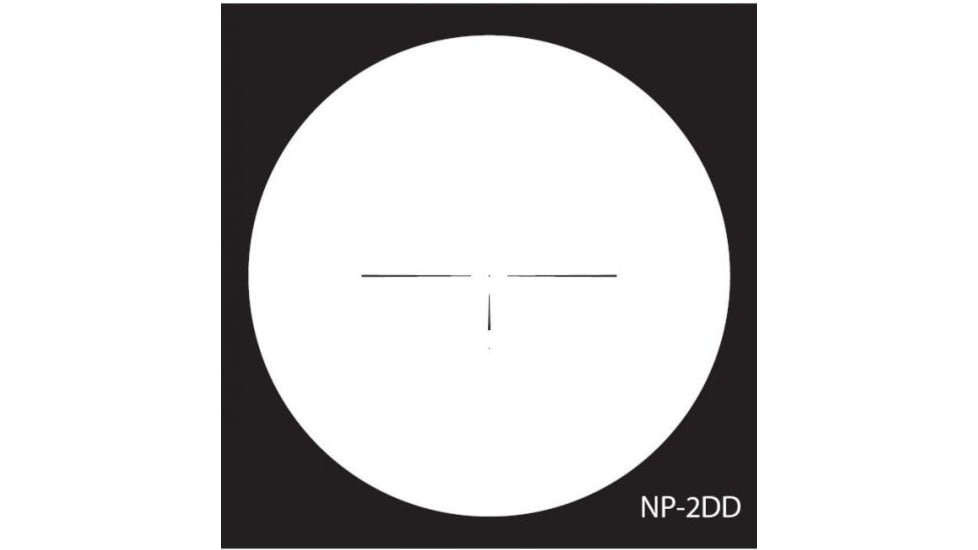
NightForce makes premium riflescopes geared towards the long-range shooter. Whether it is for competition shooting or hunting, they provide many reticle options. They make their proprietary MOAR reticle, as well as options for a Mil-Dot style. NightForce also has other competition-focused options, such as the NP-2DD, SR-1, CTR, and DDR. These reticles are very simple to use, as most simply provide a center aiming point such as a dot or thin crosshair. They are best used for long-range or competitive shooting.
MOAR
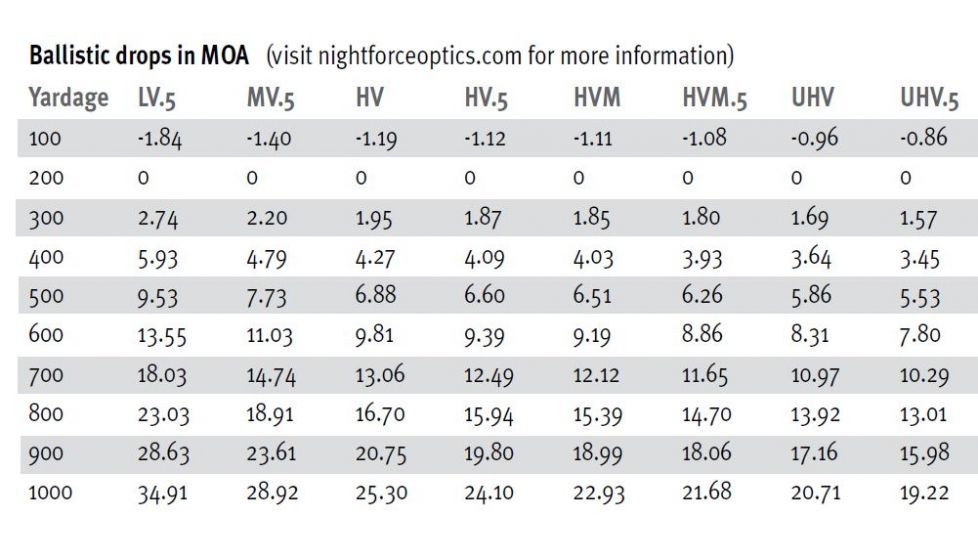
The MOAR reticle is very similar in appearance to a Mil-Dot reticle. However, the difference is in the subtension measurements. The reticle is adjusted in MOA (minute of angle) as opposed to milliradians. These scopes will have a floating center crosshair, with hash marks up and down the elevation and windage lines. These marks are separated by 1 MOA. This is a very popular option for competition shooters.
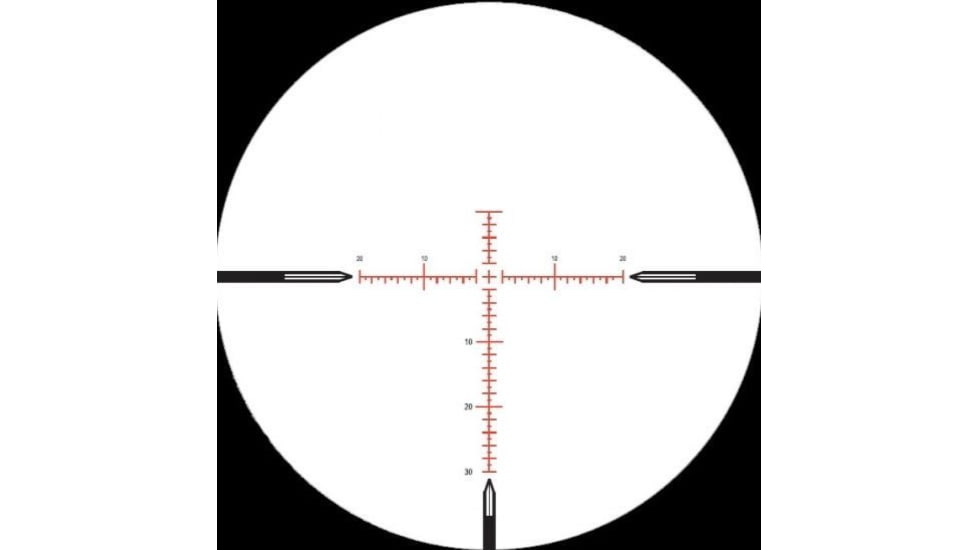
Velocity 1000 and 600
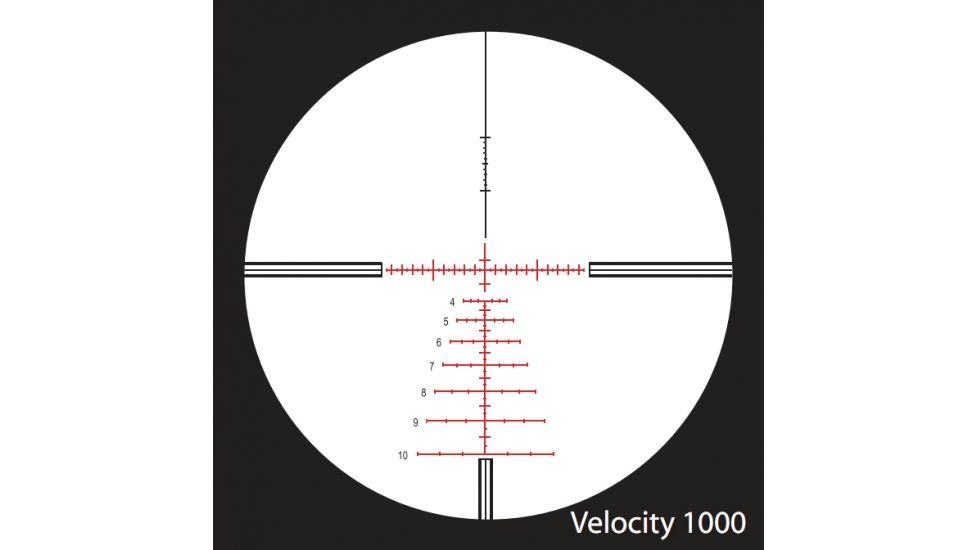
NightForce introduced a hunting-centric reticle called the Velocity. These options are available for different cartridges for different velocities and are very similar looking to a Horus-style reticle. There is the basic Velocity reticle displayed here, but the best way to select one of these is to match up the Velocity of the cartridge you will be using. They are best for hunters who will be making long-distance shots with wind speed as a concern, and like the Horus, are intended to be zeroed, then used without any mechanical adjustments to the turrets.
Horus Reticles
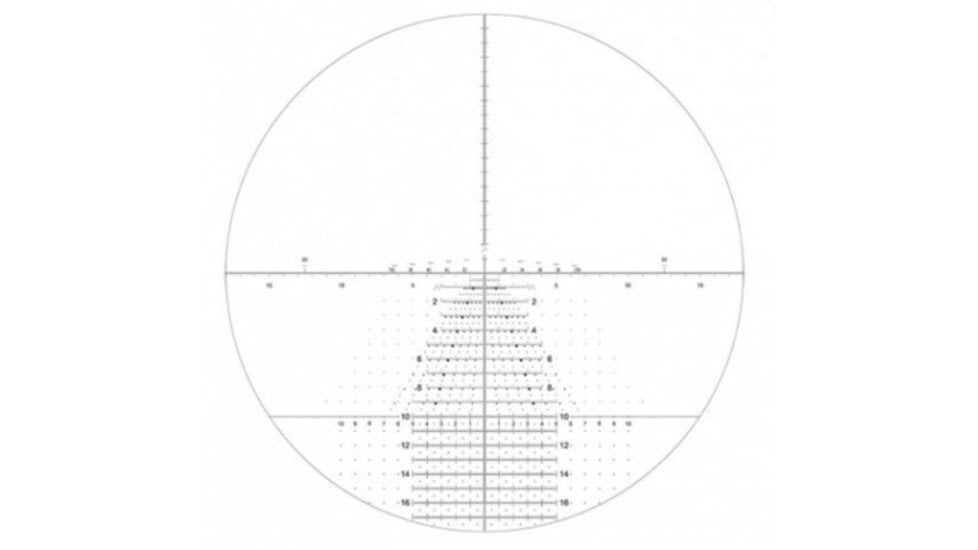
These reticles were engineered to shoot at any distance, with no adjustment to the turrets needed. The bottom portion of the reticle is a grid system, which many like to refer to as a "Christmas tree." This grid system allows a shooting team, including the shooter and a spotter, to accurately hit their target at any distance, in any crosswind. Some of these reticles will have a minimal grid system, and others are very extensive. If you've ever seen a team, and you hear the spotter say, "three down, two to the left," they are referring to the grid portion of the sight. This type of reticle is specifically designed for taking shots quickly without any adjustment needed. Sniper teams will benefit most from this system.
This is definitely a lot of information to grasp if you're looking for the right option for your purposes. Believe it or not, there are many, many more reticle options available. Please always feel free to contact OpticsPlanet to speak with one of our representatives to assist you in finding the right option for you!
